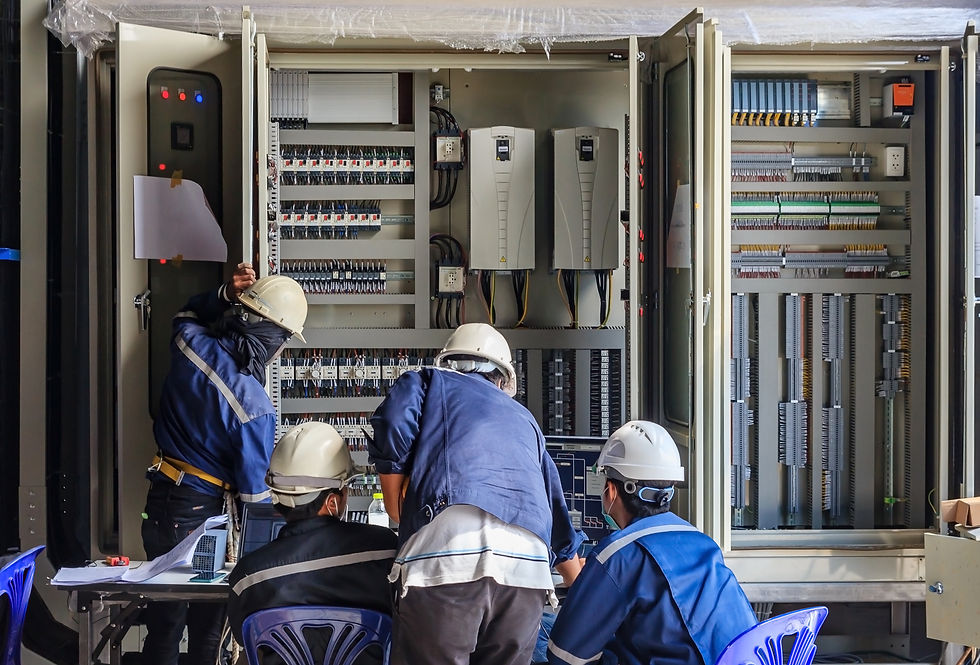Energy Storage - Where Are We Going?
- Kyra Jones
- Apr 12, 2022
- 4 min read

A huge issue facing our grid today is our challenge of storing electricity after it has been generated. Our storage capacity is so limited that it is almost negligible. For the energy storage systems (ESS) that do exist, which are few and far between, the average duration is limited to only 2 hours. This lack of storage has been one of the biggest barriers to incorporating more renewable energy into our existing system.
As briefly mentioned in our Texas Deep Freeze blog, we know electricity supplied needs to equal electricity demanded. We also know that peak electricity demand usually happens around 5-6pm, as people return home from work but before office buildings close for the night. This time, unfortunately, coincides when solar panels produce less and less electricity as the sun sets. The simultaneously increasing demand and decreasing supply has hindered (and will continue to hinder) solar power from playing a larger role in our current energy system. That is, until we are better able to store electricity for use at a later time.
Improving electricity storage capacity won’t just benefit renewable energy sources, but it’ll also make our entire grid more resilient and directly benefit everyone by allowing us to access energy even when the traditional grid has a blackout (which is predicted to become more common in the coming years). Understanding the importance of improving electricity storage capacity begs the question - where are we going?
When someone says “electricity storage,” the first word that usually comes to mind is “batteries.” We’re all familiar with this ingenious invention that allows us to power a myriad of devices without being directly connected to the grid. Batteries are wonderful because they allow for mobility and provide reliable electricity, at least until they need to be recharged or replaced. We, as a society, are also comfortable with batteries and have a general understanding of how they work. These factors all lead to investment in improving large batteries meant to provide electricity back to the grid during a blackout.
One promising battery type is a “flow battery”. While not economically viable on a large scale right now, these batteries are designed to operate over long periods of time with much longer lifespans than the common lithium battery. Additionally, with the way these systems are designed, the marginal cost of increasing size of the storage facility is significantly lower than that of lithium-ion batteries, making them a promising large-scale alternative.
Right now, the biggest limiting factors are cost and lifespan. The flow batteries with nearly unlimited lifespans are incredibly expensive, and those that are affordable have short lifespans. However, research is underway to fix these issues.
Another promising advancement in batteries is in lithium-ion Battery Energy Storage Systems (BESS). These BESS’s are designed to provide large-loads of energy for up to 8 hours, but the average duration is only 2 hours. Today, it’s unfeasibly expensive to design a BESS that has a duration for longer than 8 hours, but it's predicted that we’ll see 24-hour systems by the end of the decade. Currently, BESS’s are built in Los Angeles, Australia, the UK, and more.
While we’re seeing increases in lithium-ion battery life cycles, these batteries are still limited by their lifespans. With age, these batteries become less effective, just like the batteries in our smartphones.
One of the biggest limitations of both battery types is the raw materials required for input. Most batteries are dependent on metals, but mining can have unintended environmental consequences and lead to resource depletion.
Batteries, however, are not the only option for electricity storage. In the US, the most common large electricity storage method is through a process called “pumped hydro”, accounting for 94% of national storage. When electricity is cheap, water is pumped uphill. When electricity is expensive (or less available), the water is allowed to cascade downhill, turning a turbine to generate electricity.
While most of these plants were built in the 1970’s, the US has the geographic landscape to double our storage capacity with pumped hydro. This energy storage system, however, is largely limited by geographic location, as it requires a hill. Additionally, there are environmental impacts, like flooding leading to destroyed wildlife habitats, that must be considered.
Another non-typical, but promising energy storage system are “concentrating solar towers” plants. These work by directing mirrors at a tower which contains molten salt, which is then used to boil water and turn a traditional steam turbine (Bakke, 223). These towers collect heat throughout the day and release it at night, requiring a 24-hour cycle and automatically repeating day after day, providing up to 10 hours of energy.
The benefit of these towers is that they allow us to use solar power when traditional solar is offline. One major constraint is that even after construction of the plant is finished, it can take up to 3 months for electricity to be supplied due to the salt needing to melt. We currently have 11 plants online in the US, with more in the works.
Despite all of these advancements, electricity storage is still a huge hindrance in our electricity system. Hopefully, this’ll improve within this decade, making it easier to incorporate renewable energy and a more resilient grid.
If you’re interested in staying up to date on all energy storage news, check out this hub.
Also, check out our blog on electric vehicles.
--
Source: Bakke, Gretchen. The Grid (p. 223). Bloomsbury Publishing. Kindle Edition. Linked here.




Comments